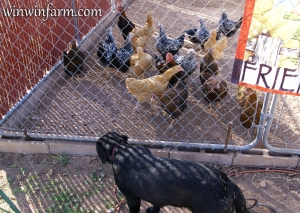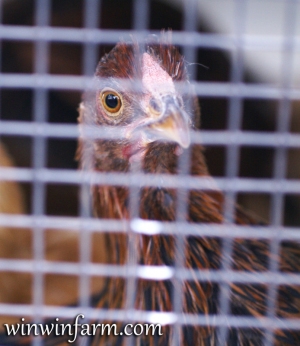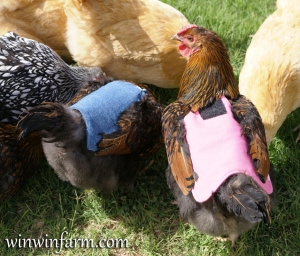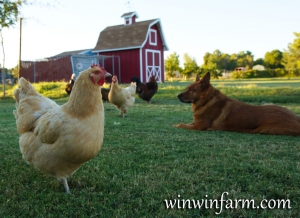Unfortunately, chickens are easy prey for many animals since they possess few natural defenses. Common predators in our area include dogs, cats, hawks, owls, and the occasional coyote. There are several things that we, as chicken keepers, can do to make sure our feathered friends remain protected from these predators.
Reinforcing Coop and Run
The coop and run should be built so predators cannot gain access to them. The coop should be raised off the ground, and the floor should be made of a strong material that can withstand prying and chewing. This discourages pests from digging their way into the coop. We also created an underground barrier around the coop and run to discourage predators from digging underneath. We buried cinder blocks 8 inches into the ground directly below the coop and run walls. You can also bury welded wire or galvanized fencing along the fence line to defend against persistent predators.
The walls and roof of your coop should be strong and sturdy. All ventilation openings should be covered in a way that keeps predators out while allowing adequate air circulation. We used heavy, vinyl coated hardware cloth from Academy Fence, but strong chicken wire can be also be used. The walls of the run should be tall enough so animals cannot jump over or easily climb inside. We use standard 6 foot fence panels, and highly discourage walls shorter than 4 feet. For added protection against aerial predators, cover the top of your run with chicken wire or shade cloth.
Free-Range Protection
If you let your chickens free-range, make sure they are well trained to roost inside the coop at night. Chickens who roost outside are extremely vulnerable to nocturnal predators. It is also a good idea to close up your coop and run at night so no predators can sneak in through the chicken door. For the tech savvy, you can even purchase and install an automatic chicken door to automate this task for you.
Be sure that your yard has several accessible bushes and trees where your chickens can seek shelter during an emergency aerial attack. You can also equip your chickens with saddles (also called capes) which make it more difficult for flying predators to grasp or wound the chicken. We make our own chicken saddles, and a few of our hens wear them, but mostly as protection from our amorous rooster.
Guard Animals
Many people choose to keep roosters since one of their primary jobs is to protect hens from predators. When chickens are foraging, the roosters are constantly on the lookout for danger. If they spot anything threatening, they will alert the hens through a series of vocalizations. We have witnessed this many times, and they will usually run to the coop for refuge. We have heard stories of roosters putting themselves directly between the predator and the hens in an attempt to save them. In some cases, the roo will do so by sacrificing his own life.
Certain breeds of dogs can also serve as great guardians for your chickens. Having a dog present in your yard will discourage predators from approaching your chickens. Our dog is not a livestock guardian breed, but we have trained him to protect the chickens, and he is very gentle with them. He often sits out in the yard with them and alerts us to any nearby dogs or cats. Hawks will also stay clear of our yard when our dog is out.
Despite all the protections you put into place, it is not uncommon to lose a chicken to a predator. We lost one of our free-ranging hens a year ago to a hawk attack, and it probably will not be the last one we lose. Hawks are protected by law so there is little you can do to stop them. The most dangerous time is September through April as they migrate through Arizona. You can read more about raptors through the game and fish department here.
Despite the dangers above, we still continue to free-range our chickens and do everything possible to protect them. Good luck keeping your poultry safe!





